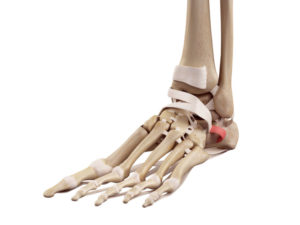 Peroneal tendonitis is not the most common foot injury, but it does have higher rates of incidence in amateur and frequent runners. The problem typically causes pain in the outside of your foot and up the outside of your lower leg with each stride when you run. Today, we take a closer look at the symptoms, and we explain what you can do to treat the condition on your own.
Peroneal tendonitis is not the most common foot injury, but it does have higher rates of incidence in amateur and frequent runners. The problem typically causes pain in the outside of your foot and up the outside of your lower leg with each stride when you run. Today, we take a closer look at the symptoms, and we explain what you can do to treat the condition on your own.
Understanding Peroneal Tendonitis
To understand the condition, we first need to understand the roll the tendon plays in facilitating movement. In each leg, there are actually two peroneal tendons – the peroneus longus and the peroneus brevis, which run parallel to one another. Their purpose is to connect the outside of your foot to the peroneus longus and brevis muscles located in your lower leg. These tendons aid in movement by everting your foot (rolling it outward) and assisting your calf muscles during plantarflexion, but they also provide ankle stabilization during weight bearing activities, like walking or running.
When tendonitis sets in, it’s typically caused by damage or tendon degeneration, which is surprising because in other areas of your body tendonitis is the result of inflammation in the tendon. For this reason, your doctor may refer to your condition by another name, like peroneal tendinopathy or peroneal tendon dysfunction.
Peroneal Tendon Injuries and Symptoms
Peroneal tendon injuries are not that common, but we’ve covered some high profile peroneal tendon injuries on our blog before. It is more common in runners than in the average adult, but even then the injury isn’t all that common. A recent study found that peroneal tendonitis makes up about 0.6% of all running injuries. It is thought to be caused by overstressing the area, or by genetic foot conditions, like a high foot arch, that predisposes a person to potential overuse and degeneration.
Symptoms include:
- Pain on the outside of the foot or leg, especially with activity.
- Swelling.
- Tenderness.
- Pain when the foot is flexed in an inward or downward position.
Treating Peroneal Tendonitis
Peroneal tendonitis can be treated with some in-home conservative care methods. First and foremost, you’ll want to take it easy for a bit to avoid overstressing the tendons. Aside from short term rest, you’ll want to focus on restoring proper function to the tendon, and that is achieved through:
- Stretching
- Strenghtening
- Proprioceptive Exercises.
Strengthening and exercise programs should focus on the eversion of the foot against resistance. This can easily be performed with an elastic or therapy band.